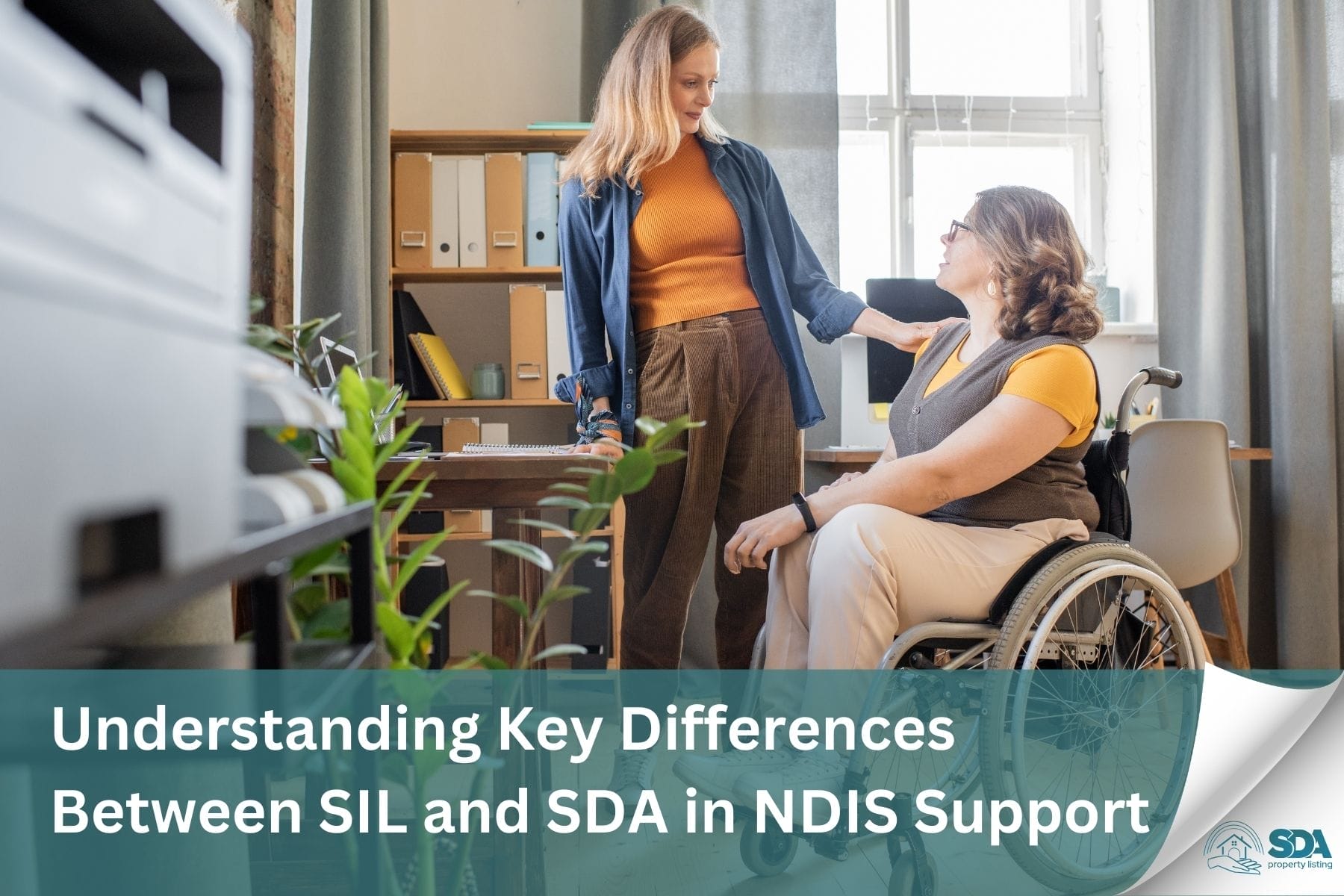
Understanding Key Differences Between SIL and SDA in NDIS Support
Navigating the NDIS (National Disability Insurance Scheme) can be complex, especially when exploring housing and support options like Supported Independent Living (SIL) and Specialist Disability Accommodation (SDA). In this blog, we’ll explore these two important categories of NDIS support, highlighting their purposes, eligibility criteria, funding mechanisms, and living arrangements.
What is Supported Independent Living (SIL)?
SIL is more about providing necessary assistance to enable people with disabilities to continue living in their communities. This includes assistance with daily living activities such as personal care, household tasks, meal preparation, and transportation. SIL aims to enhance the individual’s skills and capacity for independent living, promoting community participation and social inclusion.
What is Specialist Disability Accommodation (SDA)?
Specialist Disability Accommodation (SDA) involves purpose built or significant housing designed to meet the specific needs of people with significant functional impairments or high support needs. SDA properties are specific to ensure residents have access to accommodation with adaptations that meet their needs while affording them comfort and safety. These accommodations may include features such as wheelchair accessibility, specialised equipment, and architectural design that facilitates ease of movement and daily living tasks.
Key Differences Between SIL and SDA
Purpose and Function:
- SIL: Specialises in offering long-term services that help individuals with disabilities to develop daily living skills and increase community mobility.
- SDA: Primarily involves offering housing that has been specifically built or adapted for tenants with disability, and requires the provision of extensive support and assistance in their everyday lives.
Eligibility and Funding:
- SIL: SIL funding is accessed through the NDIS where an individual is identified as having high support needs and requiring assistance in the management of their daily life. SIL is provided and funded within the NDIS under the Core Supports category within the individual’s plan.
- SDA: SDA is only available to applicants who meet certain criteria with regards to their disabilities which require them to be in a specialised housing. SDA is funded separately under the SDA budget in the NDIS plan and is designed to improve the living conditions of participants with disability.
Living Arrangements:
- SIL: It can be offered in various tenancy arrangements such as shared accommodation with other individuals, private rental properties, or individual units within community-based settings. This means that the living arrangement that one gets depends on their preferences and requirements for care.
- SDA: Refers to residing in houses or apartments that have been specifically designed or adapted for the person’s disability needs. SDA properties are generally located in specialised buildings or clusters of buildings for the accommodation of the residents.
Understanding the distinctions between SIL and SDA is crucial for individuals and families navigating the NDIS. While SIL aims at offering individualised assistance to foster independence and inclusion in community living, SDA meets the real gap of providing specialised housing to support the safety, accessibility, and quality of life of people with significant disabilities. By offering flexible and tailored support, the NDIS aims to empower individuals with disabilities to live fulfilling lives and actively engage in their communities.
References:








